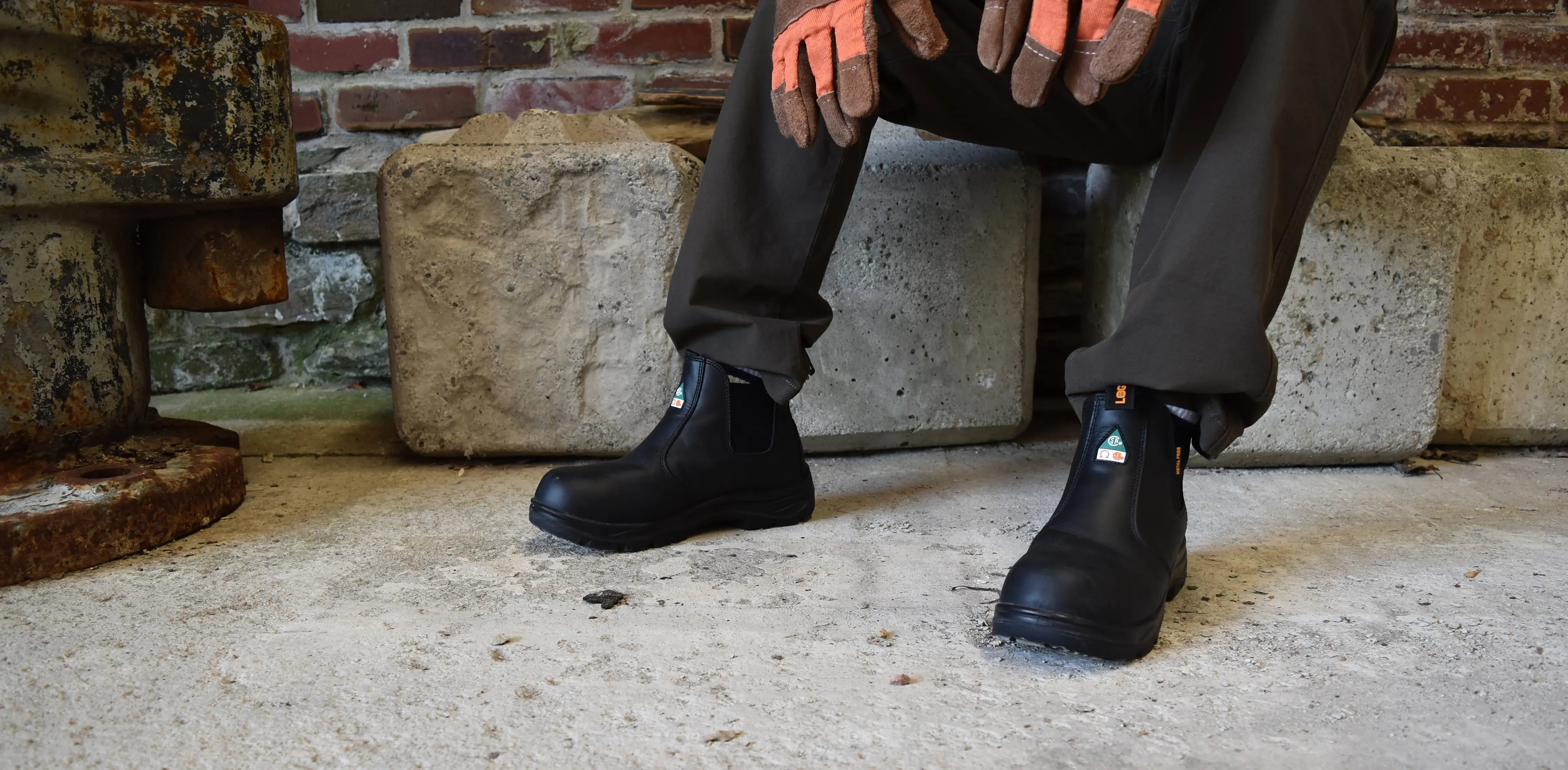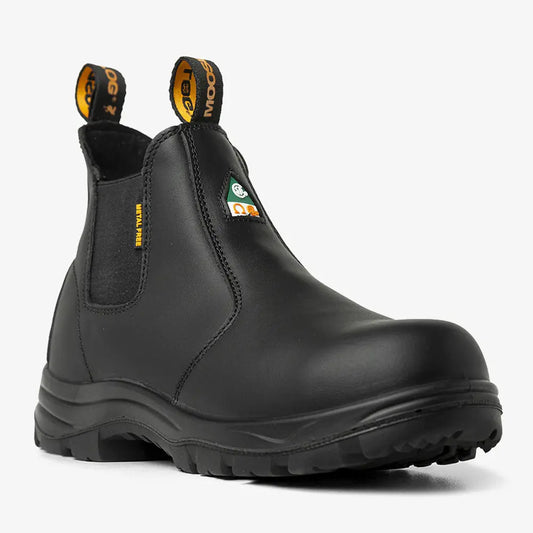
Why Canadian Tradespeople Trust CSA Certified Work Boots
If you’ve worked a single day on a site in Canada, you’ve probably seen the little green triangle stitched onto someone’s boots. You might have a pair with that same patch yourself, and there’s a reason for that. When you’re dealing with heavy gear, sharp debris, wet floors, or live wires, wearing uncertified boots just isn’t worth the risk.
CSA certified boots are part of how Canadian tradespeople stay safe and stay employed.
Isn't It Just Workers Following Rules?
A lot of job sites make CSA certification mandatory. No green triangle? You don’t step on the site. It’s that simple. But even if there weren’t rules about it, most people would still choose CSA boots anyway. That’s because they actually do the job.
You don’t want to learn the hard way what a falling beam or a stray nail can do to a regular boot. The certification means that a third-party lab tested that boot to take an impact, resist compression, and stop a nail from punching through the sole.
Electricians check for that omega symbol. Warehouse crews might look for static control tags. Welders want heat-resistant soles. The point is: different work calls for different features and the CSA system makes it easy to know what you’re buying.
What Those Little Symbols Actually Mean
A lot of workers know to look for the green triangle. But not everyone knows the rest. Here’s a quick breakdown you can actually use:
- Green triangle: Steel or composite toe with a puncture-resistant sole. You’ll see this on most general work boots.
- Yellow rectangle (SD or SD+): Static dissipative. Good for work around electronics or flammable materials.
- White rectangle with the omega symbol: Electric shock protection. If you work near live wires, this is the one you want.
- Dark grey rectangle with an "M": Metatarsal guard. Covers the top of the foot to prevent crush injuries.
- Blue square: Toe protection without the puncture-resistant plate. Usually for light-duty work.
If you’re not sure which ones apply to your job, check with your site supervisor. Most trades have a standard requirement.

What Sets MooseLog Apart
MooseLog doesn’t mess around when it comes to certification. Every one of our safety boots is tested to meet CSA Z195 and ASTM F2413 standards. But beyond just passing the test, we design our boots with working Canadians in mind.
Take the MooseLog Timber Work Boot:
- Composite toe caps that cut weight and don’t set off metal detectors
- Flexible puncture plates that won’t freeze your feet in the winter
- Slip-resistant rubber outsoles that grip wet steel, gravel, or concrete
- Two pairs of insoles so you can adjust your fit depending on the day
They’re metal-free, built for long hours, and made to handle tough shifts in rough weather. The certifications are clearly labelled on every tongue tag, and we don’t fake it. Just great boots made with great materials that meet code and hold up under pressure.
The Real Risks of Skipping CSA Certified Boots
Look, not everyone starts out buying CSA gear. If you’re new, maybe you grabbed something from a big box store that looked rugged enough. But that’s a short-term solution. The first time you kick a rebar stub or a pallet drops the wrong way, you’ll wish you had the right boots.
More than that, going without CSA-approved footwear can actually cost you:
- Jobs — You can get turned away at the gate during PPE checks
- Coverage — WSIB or your jobsite’s insurance may not cover injuries if you weren’t wearing proper gear
- Health — Some injuries never heal right, and it only takes one misstep
What matters is making it through the day without injury, it isn't about how tough your boots look.
MooseLog Worker First

We build MooseLog boots with Canadian tradesmen first in mind. Folks who spend their day on gravel, plywood, steel, mud, or slick tile, sometimes all in one shift. People who know how a long day on your feet can wear you down, and how the wrong boots can make it worse.
CSA certification is the baseline. What sets us apart is the way our boots feel after ten hours. We focus on comfort just as much as protection. With a wide room in the toe box, SafeTread rubber outsole for maximum grip, and a direct-injected PU midsole, the build holds up. But it’s the comfort that keeps people coming back.
That’s why workers across Canada choose MooseLog. They pass the safety tests, but more importantly, they don’t wreck your feet.




